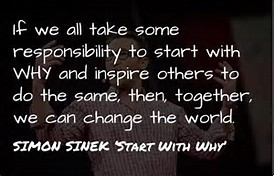On May 12th, Humboldt County Office of Education’s screening of Paper Tigers. Paper Tigers documents one year in the life of Lincoln High School, an alternative education high school in Walla Walla, Washington that experienced extraordinary improvements in student and schoolwide success following the implementation of trauma informed practices.
 A number of people were instrumental in making this event possible:
A number of people were instrumental in making this event possible:
First, Superintendent Dr. Garry Eagles has supported the vision of trauma-informed work in education across the entire span of childhood and adolescence. He has embraced early prevention with our youngest school children, all the way through to intervention with teens…recognizing that each student carries amazing potential no matter their age or circumstance.
Principal Jen Fairbanks has been our influential leader in the difficult work of changing the culture of Court and Community Schools … and has infused our school climates with the expectation of success as we find our way to becoming trauma-informed.
Dr. Peter Stoll from HCOE joined us following the movie. Dr. Stoll has been working with local schools as they develop Multi-Tier Systems of Support (MTSS) with an emphasis on all students and trauma awareness.
Jenny Bowen and Colby Smart of HCOE were generous with their technical assistance and organizational skills to bring it all together.
Finally, Jim Sporleder, Principal of Lincoln High joined us for the day. Jim leads the way for high schools to embrace the very challenging task of supporting our highest-risk, most perplexing students. Paper Tigers has been a rallying call… a validation…and an inspiration for those of us dedicated to seeing schools evolve.
In the words of local therapist Carmella Wenger, “it is good that science has validated what we’ve known for so long”. What we’ve known is that challenges, whether emotional, physical, socio-economical, or spiritual can be so overwhelming that a person’s capacity to learn and develop optimally… are interrupted. Sometimes profoundly so.
Science is catching up.
Many of us are familiar with the study done in 1995 by Kaiser Medical Group around Adverse Childhood Events, or ACE’s, and its stunning revelations (ACE’s study). We have also been learning about the NEURO-SCIENCE that describes what happens in the brain of a fetus or child who experiences chronic stress or complex trauma (effects of complex trauma).
This is science showing us with maps, x-rays, images, bloodwork, and health histories that trauma and toxic stress can be critically damaging in a person’s life.
Essentially, adverse events and complex trauma in the absences of resilience factors have far-reaching negative impacts on brain development and therefore learning…on coping styles and therefore physical and mental health… and even on life expectancy.
Locally, we are becoming more and more aware that Humboldt County is one of the three counties in this state with the highest prevalence of elevated ACE’s scores. We lead the state in percentage of our population per capita… who can count 3, 4 or even more adverse childhood events.
It is crystal clear that these negative impacts play out in our schools.
I’d like to intersect a model of marketing with what we did at this screening. If you haven’t read Simon Sinek’s book Start with Why, or watched his brief TedTalk (Simon Sinek TedTalk), definitely check them out.
Sinek emphasizes in his book that successful businesses – and he uses Apple Corporation as an example – have mastered the communication of three messages: the Why… How… and What… of business. The order of these messages is everything. Sinek coaches “lead with why”. He says, start with why you’re doing what you’re doing, instead of what it is you have to market, or how you managed to create what it is you’re marketing.
He tells us “people don’t buy WHAT you do, they buy WHY you do it”.
He discusses success in terms of the extent to which you connect with your clientele around a common belief, allowing the process of “how you’re going to achieve that belief” and “what your end result will be” to unfold from there.
He describes great leaders as those who can communicate the WHY so passionately and clearly that a critical gap is bridged between stimulating early interest in something…and influencing the majority.
History teaches us that THE KEY to influencing the majority…is the key to change.
We are walking a thin line right now, as we look to effect change in massive systems of social care and education, while also hoping to effect change one student at a time.
What we want, all of us in this room, is to see students succeed. All students. That is WHAT we’re doing as educators, social workers, clinicians, supportive aids and staff, criminal justice partners.
If you were in the room, or are reading this blog, you’re committed on some level to seeing students achieve their potential. And because were there or are reading this, you’re invested in seeing that be true for our most challenging students…Those with ACE’s scores through the roof, those experiencing toxic stress daily, those whose behaviors spell out the tremendous pressures they’re under.
And so it follows that you’re interested in HOW to help them achieve.
It’s fair to say that many of us have read the books, listened to the webinars, attended conferences, and generally acknowledged that becoming trauma-sensitive is how we’re going help our most complex students succeed.

